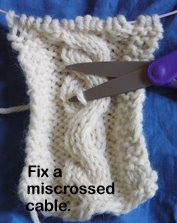...where your questions are going to lead you..............
In What a Plant Knows we are learning how plants sense gravity. Plants know where down is, for sure -- roots go down and shoots go up, regardless of light........
We learned that (at least some?) plant cells have organelles called amyloplasts, and that amyloplasts sink toward gravity within a cell.
We also learned that amyloplasts are repelled by strong magnets.
Ok ... why? The only other thing we heard in class about amyloplasts themselves is that they are repositories for starch. Starches don't have iron, I checked.
So I went to Wikipedia, and looked up amyloplasts. I learn that there are particular amyloplasts, known as statoliths, wich are enmeshed in a web of actin. Maybe it's the actin that's magnetic? Let's see. What's "actin"? Wikipedia says
Actin is a globular multi-functional protein that forms microfilaments. It is found in all eukaryotic cells (the only known exception being nematode sperm).
WELL then! What more do we need to know?
Oh, wait, what I was wondering was why amyloplasts are repelled by magnetism, rather than what kinds of cells have (or don't have....) actin.......
Hmm. Wikipedia goes on to say
An actin protein's mass is roughly 42-kDa and it is the monomeric subunit of two types of filaments in cells: microfilaments, one of the three major components of the cytoskeleton, and thin filaments, part of the contractile apparatus in muscle cells. It can be present as either a free monomer called G-actin (globular) or as part of a linear polymer microfilament called F-actin (filamentous) both of which are essential for such important cellular functions as the mobility and contraction of cells during cell division.
Hmmm.
Actin seems like fascinating stuff (now I wonder why every last plant and animal cell needs it, except nematode sperm! Not to mention who figured out nematode sperm don't have actin, and why they were looking.....).
I think actin's a dead end for my original question. It doesn't seem that actin is going to be answering why amyloplasts -- or statoliths -- would be affected by magnetism. Let's walk away from actin and try something else.
I Googled
amyloplast magnetism
and found this scholarly article: Intercellular magnetophoresis of amyloplasts and induction of root curvature
in which I found
"We describe experiments that exploit the difference in magnetic properties between diamagnetic compounds, namely starch, and hence amyloplasts, and cytoplasm. The (diamagnetic) susceptibility of starch (amyloplasts) is greater than that of the cytoplasm."
This sounds promising. What, I wonder, does "diamagnetic" mean? Back to Wikipedia:
Diamagnetism is the property of an object or material that causes it to create a magnetic field
in opposition to an externally applied magnetic field. It is a quantum
mechanical effect that occurs in all materials; where it is the only
contribution to the magnetism the material is called a diamagnet.
!!!!!!!!
Who knew? Diamagnetism. Wow. I'm going to let that totally new-to-me concept answer my question, and go back to the Plants lecture I mean to be listening to.
Isn't it excellent that any random person with an internet connection can sit in her own study, with her dog snoring on the couch, and find out all this stuff?
Cool.
.
Monday, November 04, 2013
Subscribe to:
Post Comments (Atom)

















No comments:
Post a Comment